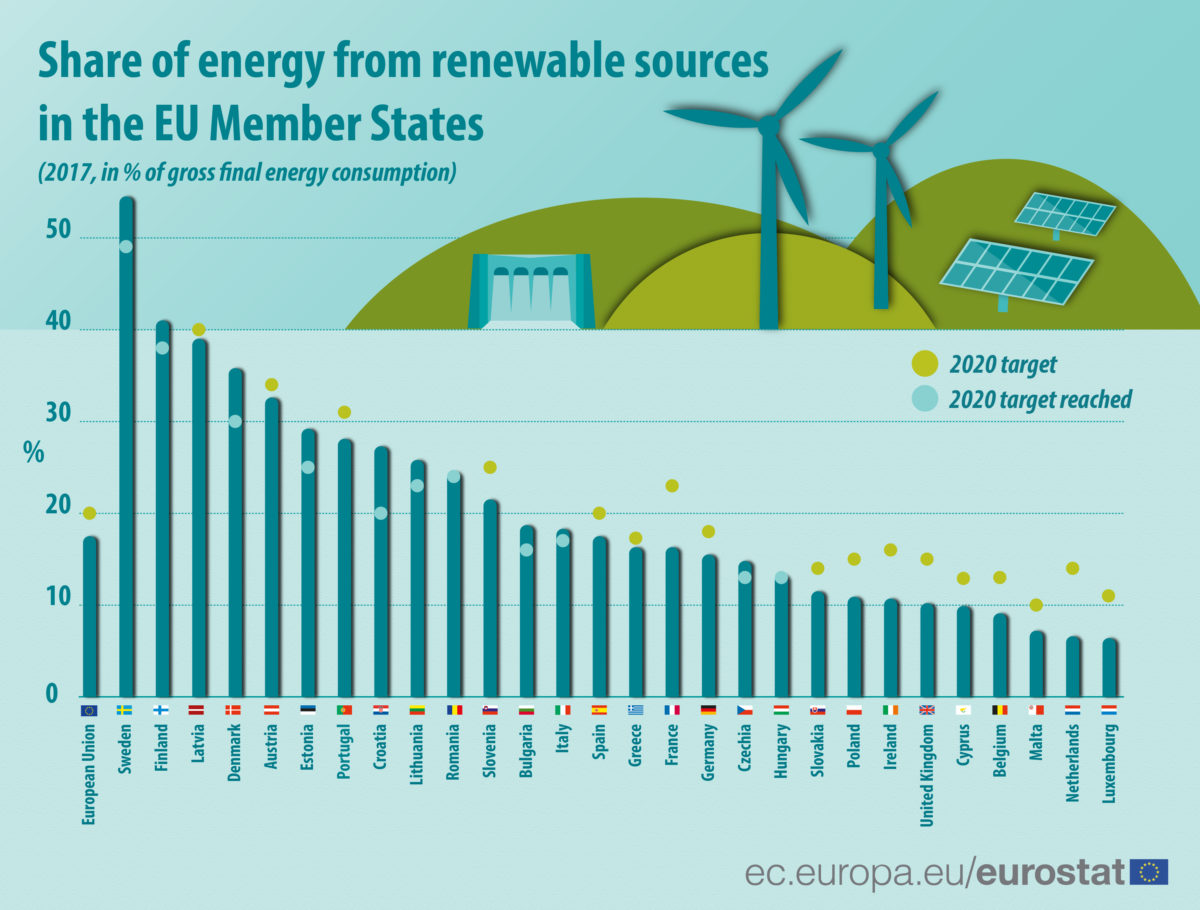The share of renewable power generation resources in the EU energy mix is on the rise – but not fast enough to meet urgent climate change mitigation goals.
According to data released by the political bloc’s statistics authority Eurostat, renewables in 2017 accounted for 17.5% of the energy consumed. That marked a slight increase from 17% a year earlier.
According to Eurostat, the primary production volume of renewable energy among the EU’s 28 member states reached 226.5 million tonnes of oil equivalent in 2017. That meant renewables grew 64% between 2007 and 2017, at an average rate of 5.1% per year.
Wood and solid biofuels supplied the largest proportion of renewable energy generation in the bloc, with 42%, followed by wind power (13.8%) and hydro (11.4%).
Electric pace
Specifically for electricity, EU member states achieved an average of 30.7% from renewable resources and wind power supplanted hydro for the first time in that segment to be the biggest source (37.2%) of renewable electricity, after growing 250% in ten years.
The rise of solar as a renewable source of electricity in that period was even more striking, with PV having grown from a 0.7%, 3.8 TWh share of the generation mix in 2007 to 12.3% – 119.5 TWh – in 2017.
In the heating and cooling sector, the EU target was almost achieved in 2017, as renewable energy accounted for 19.5% of the energy used.
However the transport sector continued to lag the adoption of renewables elsewhere as, in 2017, just 7.6% of the energy used came from clean energy. The bloc has set a target of reaching 10% in transport by next year, with renewable energy sources to include hydrogen biofuels and biomethane. The average share of renewable energy resources used in EU transport varied from 38.6% in Sweden, 18.8% in Finland and 9.7% in Austria down to less than 2% in Croatia, Greece and Estonia.
Ten nations falling short
There are 11 EU countries that have already met their 2020 renewable energy targets and a further seven are fairly close. Countries like the Netherlands, Ireland and France are pretty far off target with Malta, the Netherlands and Luxembourg featuring the lowest share of renewable energy in their systems.
Last year, the Netherlands and France enacted new policies to accelerate their renewable energy adoption rates, although the reaction in France to a planned eco tax on fuel spelled out the dangers of applying such measures in unequal societies.
The Dutch PV market grew 46% last year, and France committed to tender 17 GW of new solar capacity up to 2025.
This content is protected by copyright and may not be reused. If you want to cooperate with us and would like to reuse some of our content, please contact: editors@pv-magazine.com.




2 comments
By submitting this form you agree to pv magazine using your data for the purposes of publishing your comment.
Your personal data will only be disclosed or otherwise transmitted to third parties for the purposes of spam filtering or if this is necessary for technical maintenance of the website. Any other transfer to third parties will not take place unless this is justified on the basis of applicable data protection regulations or if pv magazine is legally obliged to do so.
You may revoke this consent at any time with effect for the future, in which case your personal data will be deleted immediately. Otherwise, your data will be deleted if pv magazine has processed your request or the purpose of data storage is fulfilled.
Further information on data privacy can be found in our Data Protection Policy.